
Search Wild Foods Home Garden & Nature's Restaurant Websites:
Chufa
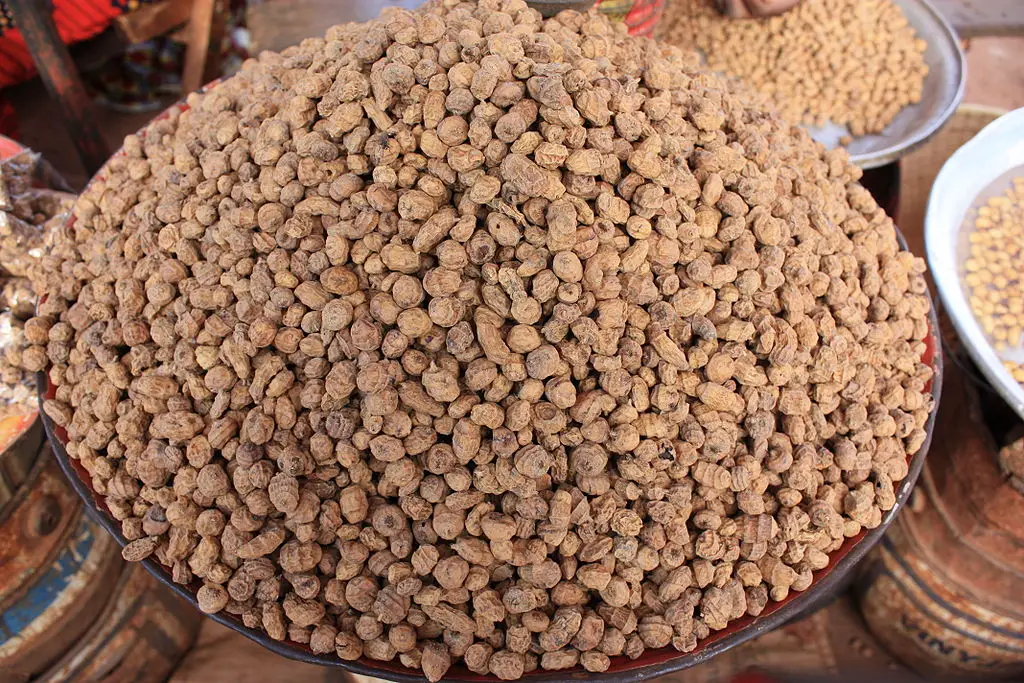
Dried Chufa or Tigernuts for sale in the Banfora market in SW Burkina Faso. (Marco Schmidt CC BY-SA 3.0)
(NOTE: If you are not interested in growing Chufa, but just finding the plant and using the tubers, try going to the Nature's Restaurant Online site for Chufa Nuts.)
Chufa (Cyperus esculentus) has a few names: Nutgrass, Yellow Nutsedge, Earth Almond and in African countries they are known as Tigernut. They are a food known for thousands of years in Egypt, and are well known in Southern Europe for making a milk like drink called Horchata de Chufa. In Europe and Africa they are grown as food crops. In North America, they are not a crop food, at least not that I'm aware of, although they should be. Here they are a wild food found on the edges of wetlands and disturbed lands. They are easy to recognize, and if you are familiar with Egyptian drawings from the past, you will recognize them from that too. The name Earth Almond hints to their nutty taste.
This plant can be aggressive if it likes where it is growing, so beware. Actually, what I find funny is that gardeners often hate this plant, and see it as a major enemy weed even though it is a great respected ancient food crop. They will call it "swamp grass", and say things like, "once you get it, you can't get rid of it". They keep pulling it up, but don't realize they are leaving the nuts (a great food) in the ground - and it re-sprouts from the nuts. So, if there is one plant with 20 nuts on the roots, and you pull the plant - it sprouts 20 plants!
Is the growing of this plant compatible with Natural farming, Ecoagriculture or Eco friendly agriculture, Ecological farming, Sustainable agriculture, Agroforestry or Agro-sylviculture and Permaculture: Because you have to dig up the tubers, you do disturb the soil. However, you do not need to till the soil with this plant as long as it is grown in open, sandy soil, making it compatible with Natural farming or no-till gardening. This plant is also cultivated on a large scale using conventional mechanical soil turning methods in Africa. Your choice with this one. What I do suggest though, is to follow the diagram below in the pictures for the best crop.
Finding Them: The way I find them is to look for Cattails. Cattails are in the water, but very often you will see Chufa growing on the land right around. They like damp soil, but not be right in the standing water themselves. Areas that flood occasionally are good places to look as well. Also, it is common to find young ones where topsoil has been placed. See the included pictures of the young ones to know what to look for. Young ones are good only for transplanting, you need mature ones in the fall for the tubers to plant.
Soil & Site: Try to find the dampest area you can to grow them - but not mucky wet. Like many plants that are root or tuber crops, you will get much more, and often much better quality crops from growing them in loose, open, loamy soil. Though this plant will grow in a wide variety of conditions, if you want a good crop you will need full sun and moist soil all season long. You can get away without the soil moist all the time, but the crop is not as good.
Planting: Once you find some in the wild, dig up the tubers in the fall and plant them where you want them to grow. Plant them as deep as you find them - between 2.5-5 cm (1-2 inches). Even tiny ones will turn into plants in the spring. Again, follow the diagram below with the hilling to get the best crop. This also makes the harvest much easier.
Transplanting: For transplanting, you need the young plants. This by the way, is a less efficient method of getting them in your garden. If the plants are older and you try to move them, they will die. Once transplanted, you will have to keep them wet for a while. After you have them established in an area, you can harvest year after year.
Maintenance: A little compost or composted manure spread in the fall after the plants have gone dormant will provide all the nutrients they need. Mulching the area after that helps the ground stay moist during growing season. When harvesting, turn over the soil to keep it as loose as possible.
Harvesting: In the fall around the time when the leaves are starting to fall from the trees, just dig them up and gather the larger ones. Leave the small ones in the soil for next year. If they are congested in certain spots, replant some of the smaller ones where they are sparse.
Using: They are tasty raw and cooked. They are just one of those great all around foods. Slice them up and cook in any type of meal. There is nothing special about preparing them or using them, you don't even have to peel them. They go with most anything. An excellent addition sliced up in stir-fry's. Slice up and put on salads raw.
Description:
- USDA Plant Hardiness Zone: 3-9 (More information on hardiness zones).
- Soil pH: 5.0-7.0
- Plant Size: Up to 90 cm (3 feet) tall, but usually much smaller
- Duration: Annual or Perennial
- Leaf Shape: Very long and thin - often mistaken for a type of grass - it is not a grass, but a Sedge.
- Leaf Phyllotaxis (Arrangement) on branch: Basal (leaves come from Base of plant)
- Leaf Size: Up to 50 cm (20 inches) long and 8 mm (1/3 inch) across
- Leaf Margin: Entire (smooth edged)
- Leaf Notes: Light green color, the central leaf vein looks like a channel in the center of the leaf. At the top of the stem where the flowers are produced there are what looks like another set of leaves that are technically Bracts
- Flowers: Quite variable depending on the plant and the flower maturity. Can be light tan, yellowish, gold, brown or auburn red. Flowers look like little, sparse bottle brushes
- Fruit: little, reddish-tan, three sided longer than wide seeds
- Habitat: Seems tolerant of many conditions. Favours damp to wet soils, tolerates occasional flooding, I've seen it appear regularly in gardens, dry soil, disturbed lands, edges of ponds. Grows larger with higher nitrogen content in soil. Needs full to partial sun.
Web Resources:
- Recipe search on the web here (Google search) and here (Bing search).
- Pictures on the web here (Google images) and here (Bing images).
- Interactive USDA distribution map and plant profile here.
- The Biota of North America Program (BONAP) distribution map here. BONAP map color key here.
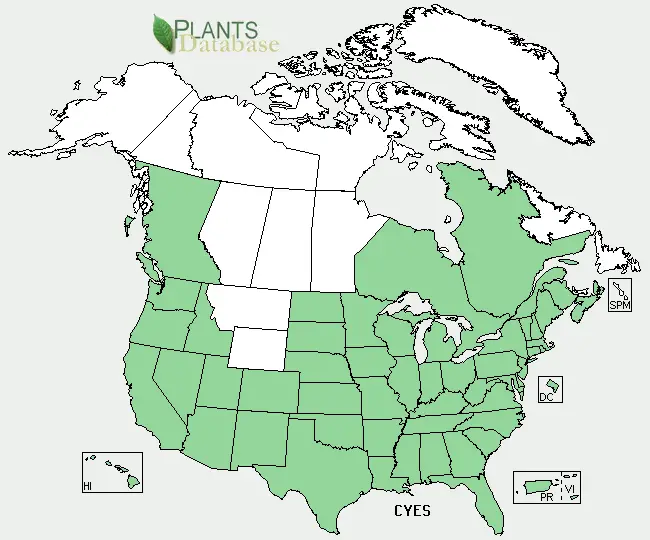
Chufa (Cyperus esculentus) range. Distribution map courtesy of U. S. Department of Agriculture (USDA Natural Resources Service) and used in accordance with their policies.
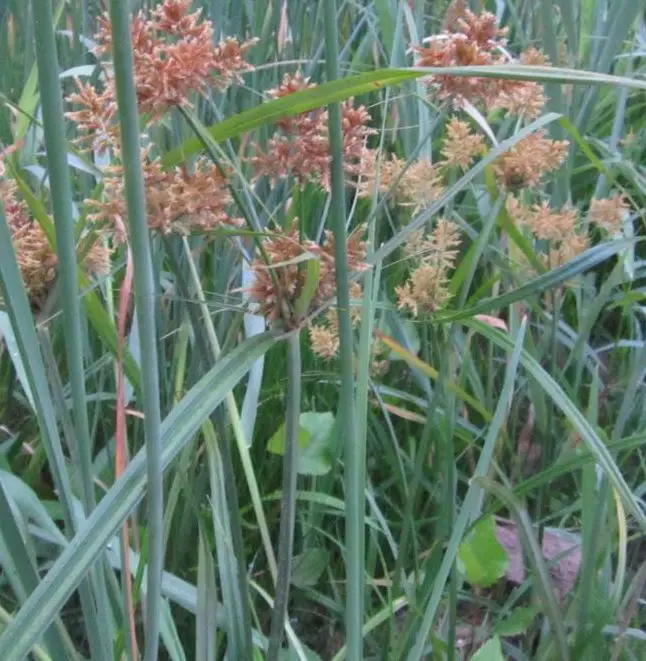
Chufa growing on the edge of a wet area full of Cattails on the edge of a forest. This is what you are looking for when hunting for the tubers to plant in your garden.
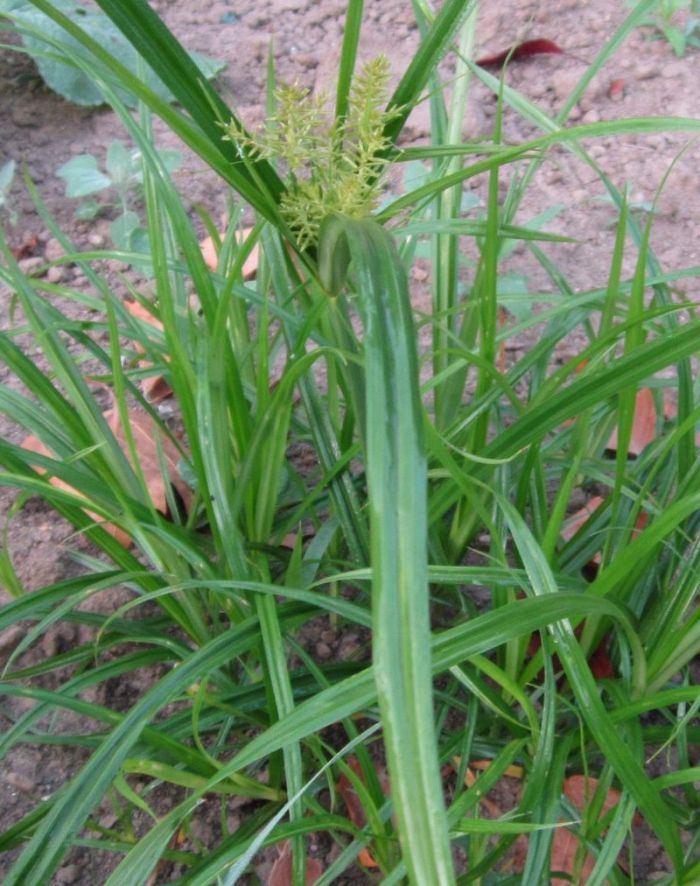
Young Chufa coming up in a very dry spot. If you are going to transplant, this is what you are looking for.
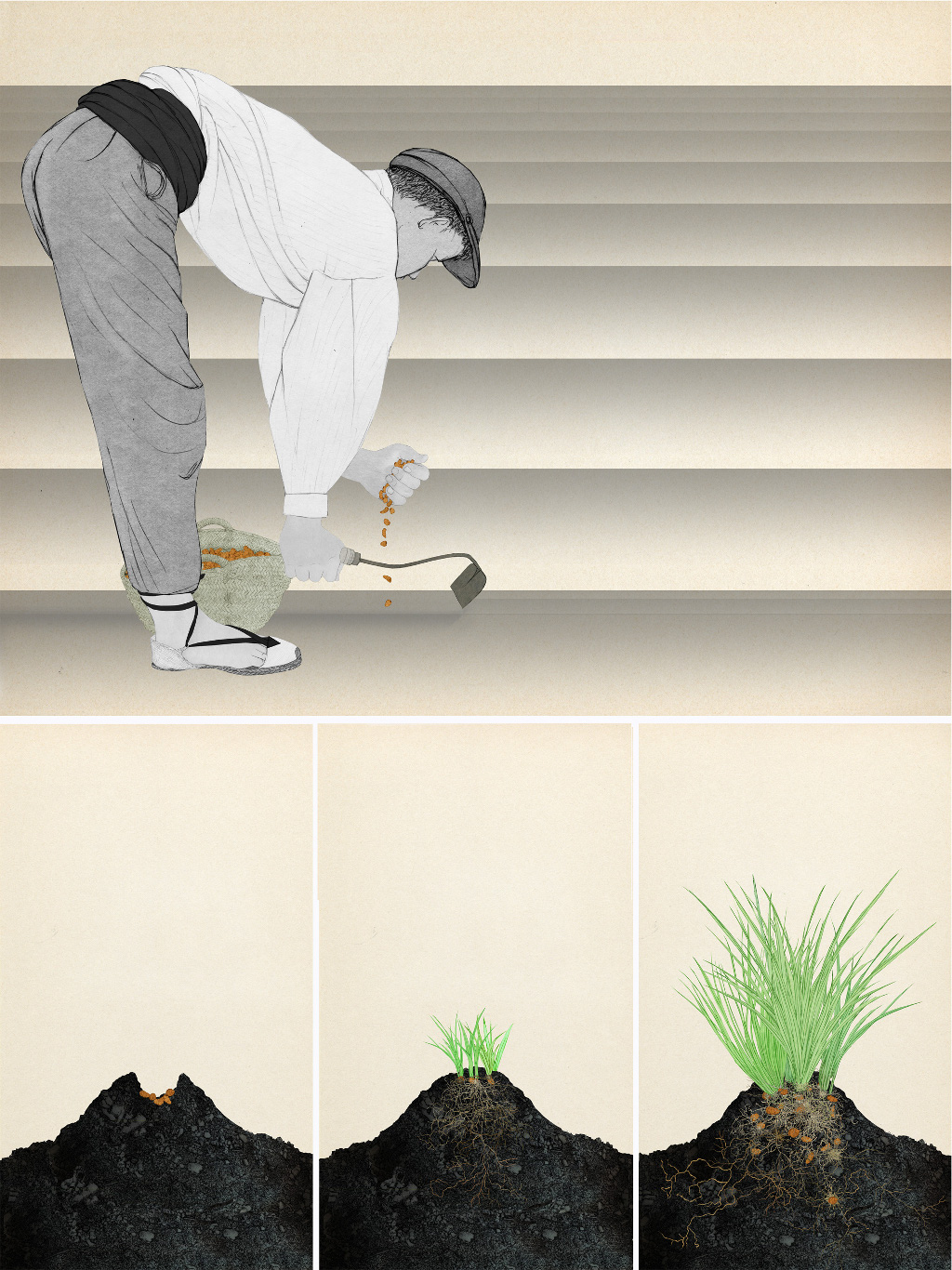
Growing chufa is an ancient gardening art. This picture says it all. Follow this in your home garden, and you will be pleased by how much you get. (matge realitzada pel Museu Valencià d'Etnologia per al Museu de l'Horta d'Almàssera. Representa un llaurador plantant xufa i el procés de creixement d'esta)
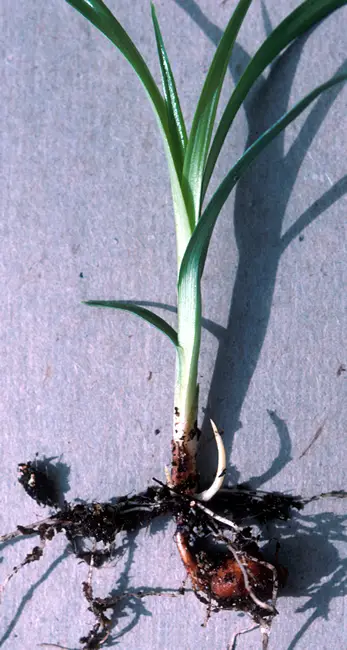
Freshly dug up with a Chufa nut clearly visible attached to the root. (By: dr. Stanley Kays)
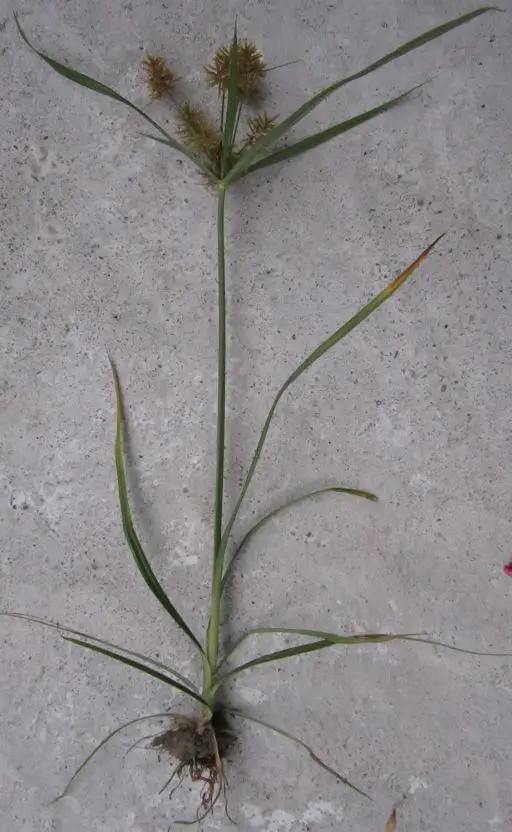
Whole Chufa plant. The large to small marble sized tubers, often called nuts, are on the ends of the roots all around the plant. Pulling up the plant like I did here to get a picture, leaves the nuts in the ground. Take note of the unusual nature of the leaves of this plant, which is a Sedge. There are the leaves from the base, a tall stalk, which I've seen as little as 8 inches to over 20 inches, and then another set of leaves coming out from a single point on the upper part of the stalk where the flowers appear above. I don't know any other plant that looks like this, so this is a fairly easy plant to identify.
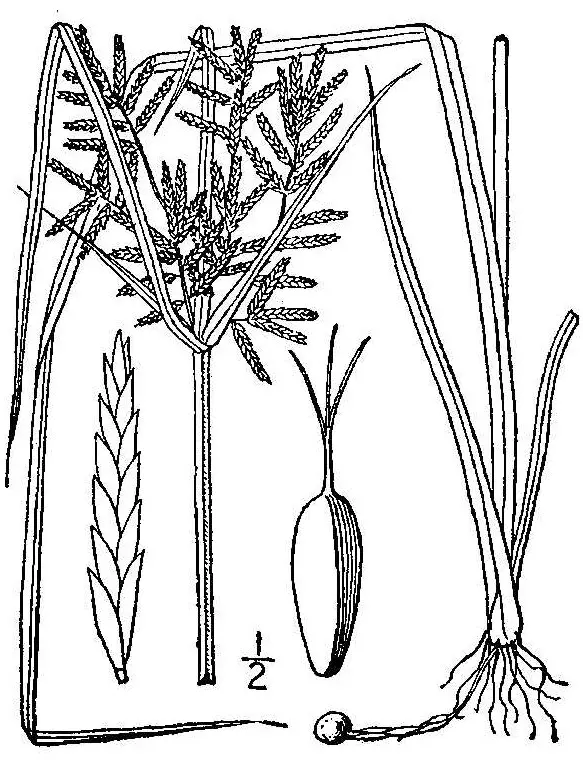
Chufa diagram. (USDA-NRCS PLANTS Database / Britton, N.L., and A. Brown. 1913. An illustrated flora of the northern United States, Canada and the British Possessions. 3 vols. Charles Scribner's Sons, New York. Vol. 1: 304.)
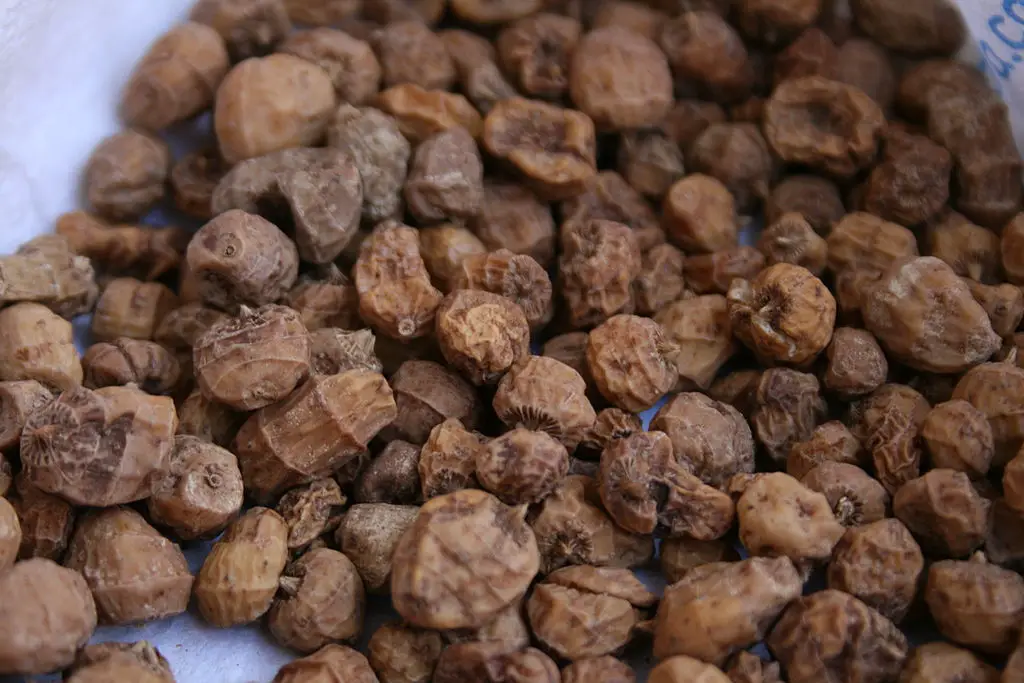
Dried Chufa up close. (By: Tamorlan CC BY-SA 3.0)
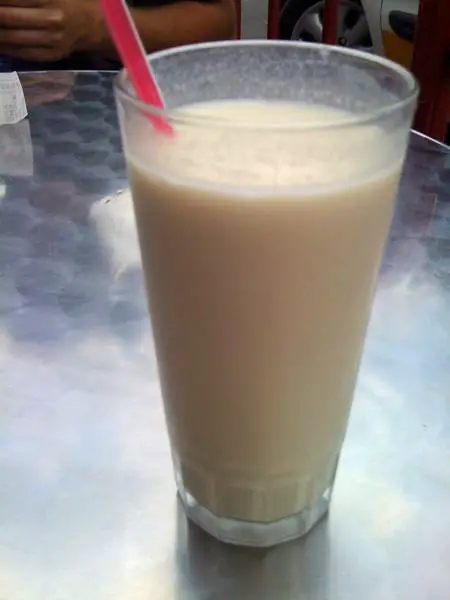
Horchata de chufa drink in Madrid, Spain. (By: Jorge Díaz Attribution 2.0 Generic)
Search Wild Foods Home Garden & Nature's Restaurant Websites:
Share:
Why does this site have ads?
Originally the content in this site was a book that was sold through Amazon worldwide. However, I wanted the information to available to everyone free of charge, so I made this website. The ads on the site help cover the cost of maintaining the site and keeping it available.
Google + profile
